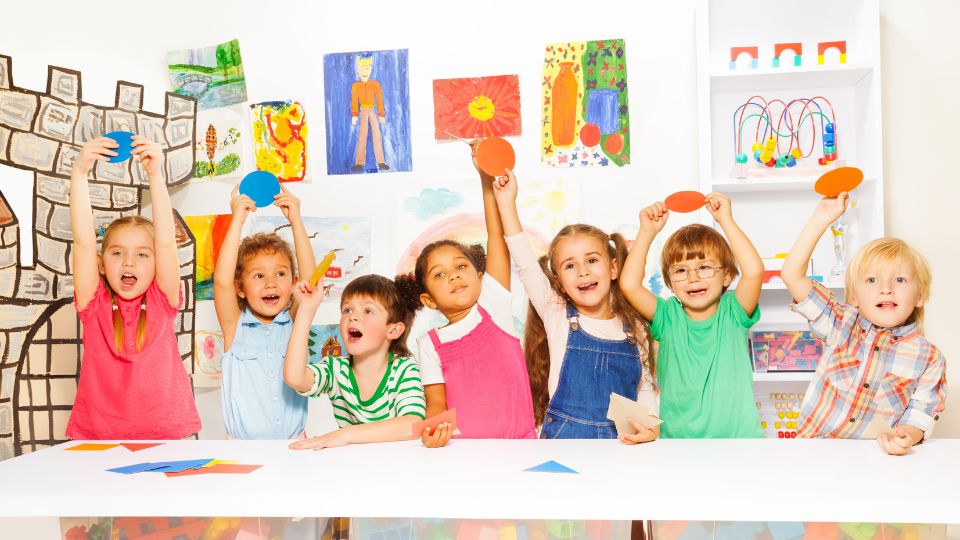Understanding Kindergarten Anxiety: A Guide for Parents
Kindergarten anxiety, also known as school or separation anxiety, refers to the distress or worry experienced by young children when they are separated from their parents or caregivers upon starting kindergarten or school. It’s a common reaction that many children face during this transitional period. Symptoms can range from mild uneasiness to more severe forms of anxiety, such as crying, clinginess, stomachaches, or refusal to attend school.
This anxiety often stems from the unfamiliar environment, separation from familiar faces, and the new social and academic expectations. While it can be challenging for both the child and the parent, most children gradually adjust and overcome these feelings as they become more familiar with the school routine, form relationships with teachers and classmates, and gain confidence in their surroundings.
Support and reassurance from parents, along with consistent routines and positive reinforcement about school experiences, can significantly help children navigate and cope with kindergarten anxiety.
Why is Kindergarten Anxiety a Concern for Parents?
For parents, recognizing and addressing kindergarten anxiety is crucial for several reasons. First and foremost, this anxiety can significantly impact a child’s emotional well-being and their ability to adapt to new environments. Unchecked anxiety might affect their academic performance and social interactions at school, potentially hindering their overall growth and development.
Effective Strategies for Handling Kindergarten Anxiety
Open Communication and reassurance
Encourage your child to express their feelings about starting school. Listen actively, validate their emotions, and offer understanding. Explain what they can expect at school—fun activities, making friends, and learning new things. Emphasize that it’s a normal feeling to be a bit nervous at first, but it gets easier with time and helps address kindergarten anxiety effectively.
Familiarization
Before the big day arrives, take the opportunity to visit the school alongside your child. Wander through the vibrant classrooms, stroll around the inviting playgrounds, and take the chance to meet the friendly faces of the teachers. This prelude not only familiarizes your child with the physical layout of the school but also creates a sense of belonging and reduces the daunting nature of the unfamiliar environment. Encouraging them to interact with teachers fosters an initial connection, making the classroom setting less intimidating and more approachable. This visitation acts as a reassuring preview, paving the way for a smoother transition into the new school experience.
Establish a consistent routine
Crafting a reliable morning routine lays the groundwork for a reassuring start to the day. Establishing a predictable sequence of activities, from waking up at a consistent time to having breakfast and getting ready for school, offers children a sense of structure and stability. This routine not only sets a positive tone for the day but also instills a feeling of control, empowering them to anticipate what comes next. Through this rhythm, children build confidence and a sense of security, knowing what to expect as they prepare for the adventures and learning opportunities that await them at school.
Positive Reinforcement
Encouraging positivity about school revolves around highlighting its thrilling facets. Engage your child in discussions about the wonderful possibilities school offers, emphasizing the joy of making new friends, playing exciting games, and discovering fascinating things every day. Use enthusiastic and affirmative language, painting school as a place brimming with adventures waiting to be explored. By consistently portraying school in a positive light, you nurture anticipation and enthusiasm within your child, fostering a mindset that eagerly embraces the delightful experiences and opportunities awaiting them in this new environment. This positive outlook helps them approach school with excitement, curiosity, and an open mind, setting the stage for a rewarding and enjoyable educational journey.
Practice Separation
Ease into separation by starting with brief periods away from your child in familiar surroundings, such as leaving them in the care of a trusted family member or friend. These short separations provide a gentle introduction to being apart while maintaining a sense of security. As your child grows accustomed to these brief separations and becomes more comfortable, gradually extend the duration of time spent away from each other. This incremental approach helps build your child’s confidence and reassures them that separations are temporary and manageable, fostering a sense of independence and security in new environments.
Use comfort items
Empower your child by permitting them to bring a cherished item from home, such as a beloved toy, a comforting blanket, or a family photo, to school. These familiar objects act as anchors, offering a sense of familiarity and security in the new environment. Holding onto a piece of home provides a source of comfort, reassurance, and emotional support, helping your child navigate through moments of uncertainty or anxiety during the school day.
Stay and practice calm
During drop-offs, radiate calm and positivity to reassure your child, even if they exhibit distress. Display confidence and reassurance while keeping the goodbye brief, as lingering might heighten their anxiety. Communicate your departure with warmth and certainty, affirming that you’ll return, establishing trust, and reinforcing the notion that separations are temporary and manageable.
Keep engaged
Active engagement in school activities, orientations, and meetings empowers parents to comprehend their child’s school environment. Meeting teachers and participating in events foster a deeper understanding of the educational journey. This involvement not only strengthens the parent-school partnership but also enables parents to provide informed support, reinforcing a sense of security and encouragement for their child’s academic and social growth.
Acknowledge and validate feelings
Encouraging emotional expression, assure your child that feeling anxious about school is normal. Validate their emotions by acknowledging their concerns, emphasizing that it’s alright to experience these feelings. Introduce coping strategies such as deep breathing exercises or positive thinking to equip them with tools to manage their emotions, fostering resilience and self-regulation in dealing with anxiety.
Encourage Independence with age-appropriate tasks
Fostering independence at home involves assigning age-appropriate tasks that empower your child. Providing choices and responsibilities, like tidying up toys or setting the table, instills a sense of capability and self-reliance. This autonomy nurtures their confidence, transferring the skills learned at home to new situations, including navigating the challenges of school with a sense of assurance and adaptability.
Acknowledge and praise even small achievements
Recognizing and celebrating small milestones, like a successful drop-off or making a new friend, acknowledges their accomplishments in navigating the school environment. Praising their courage and efforts reinforces their confidence and self-worth. This positive reinforcement builds their self-esteem, encouraging them to embrace new challenges with resilience and a sense of achievement.
By implementing these strategies with patience and consistency, parents can help their children navigate the transition into kindergarten with less anxiety and more confidence. Every child is unique, so it’s important to adapt these strategies based on your child’s individual needs and personality.
kindergarten anxiety is a common challenge, but with understanding, patience, and proactive strategies, parents can help their children in this transition smoothly. Seeking support from available resources can empower parents in supporting their child’s emotional well-being during this crucial phase.
Some resources for Parents
Accessing further guidance and support can be invaluable for parents navigating kindergarten anxiety:
Books: “The Kissing Hand” by Audrey Penn, “Llama Llama Misses Mama” by Anna Dewdney.
Websites: American Academy of Pediatrics (healthychildren.org).
Parenting Communities: Join online forums or groups where parents share experiences and advice, such as Parenting.com or WhatToExpect.com.











